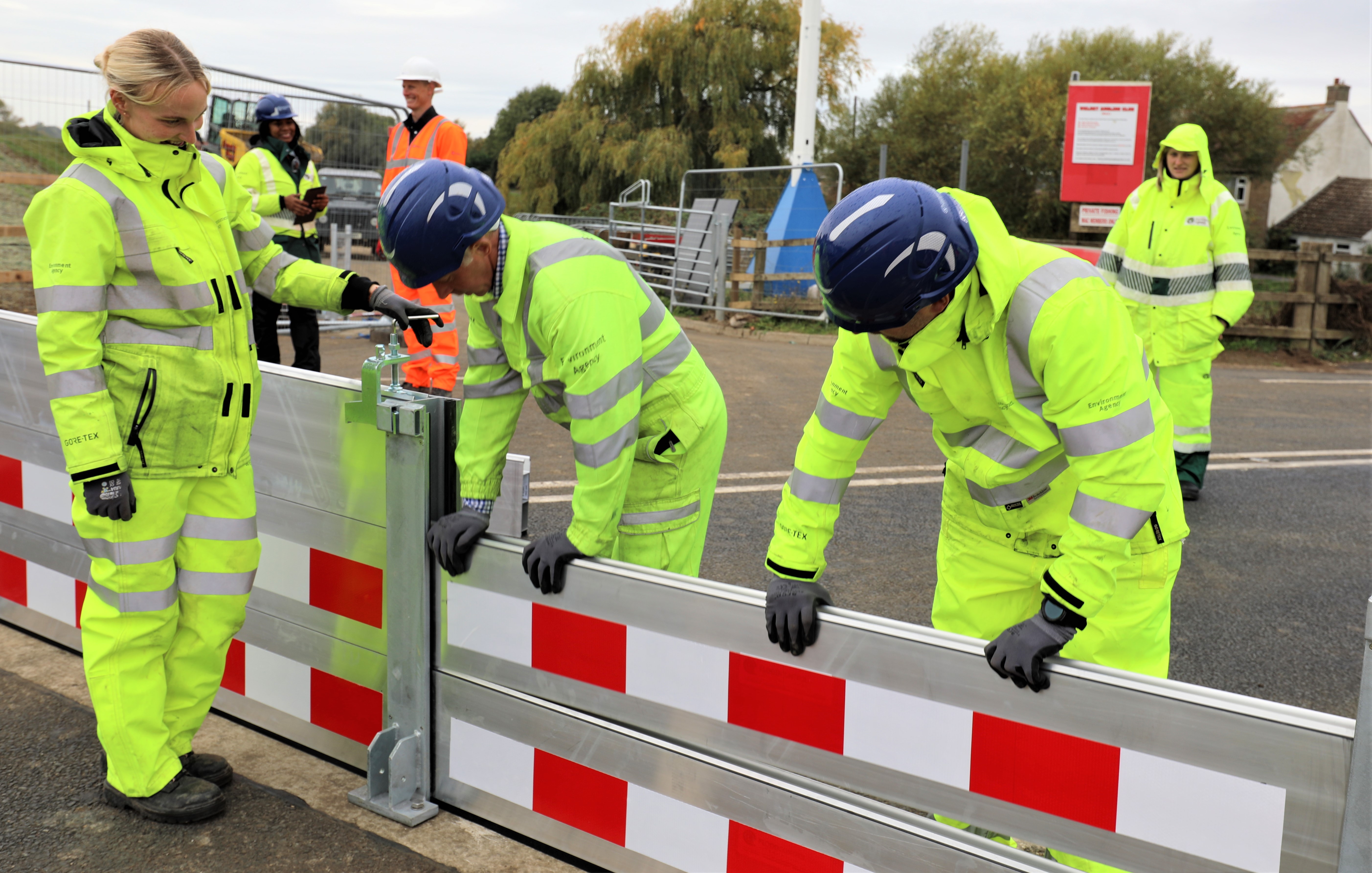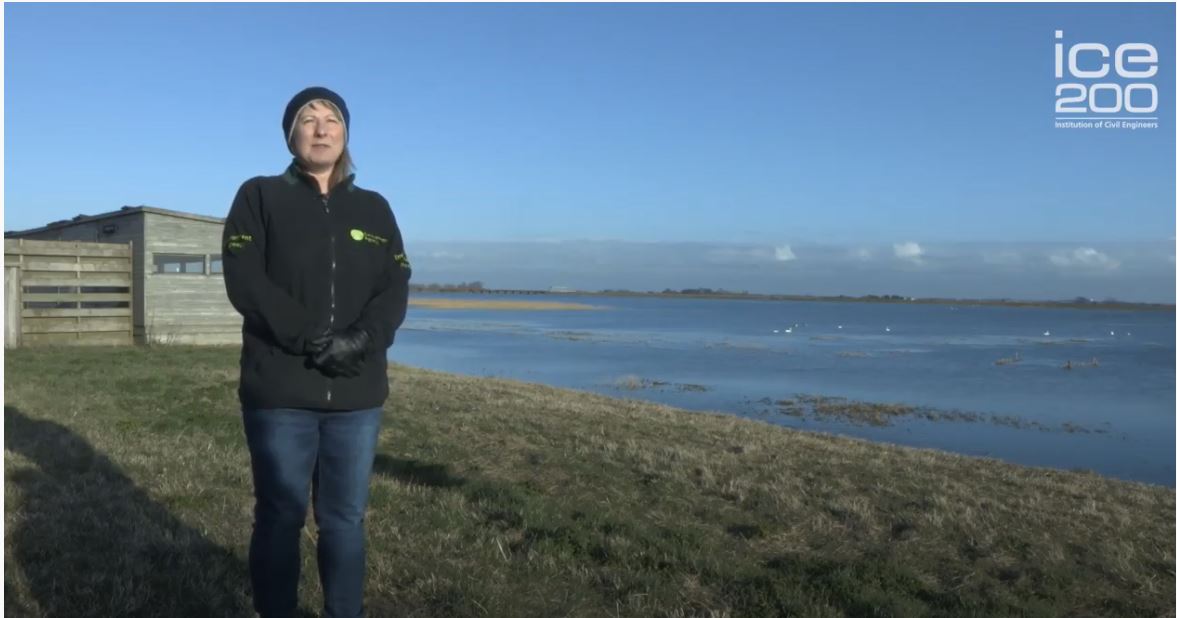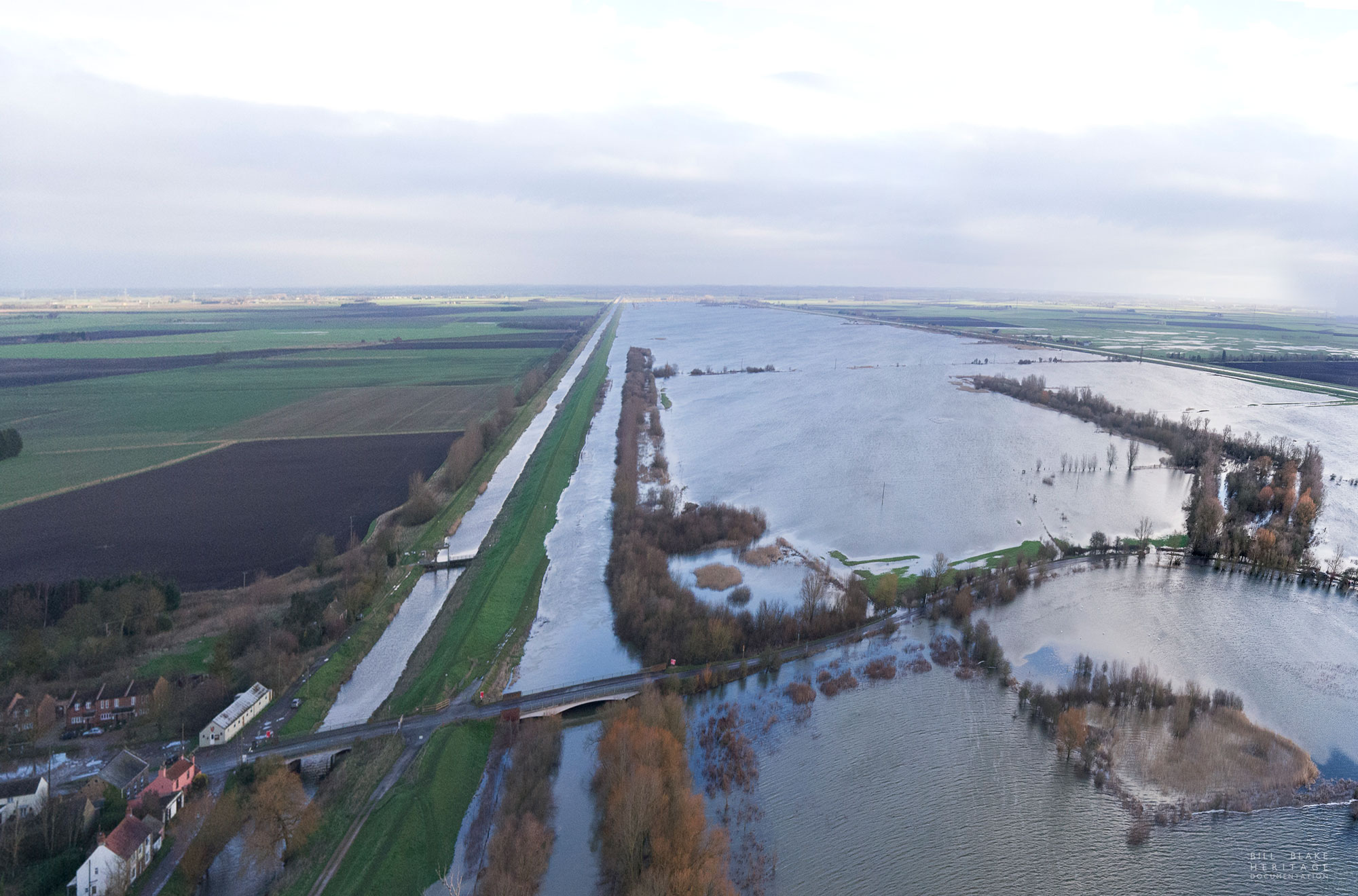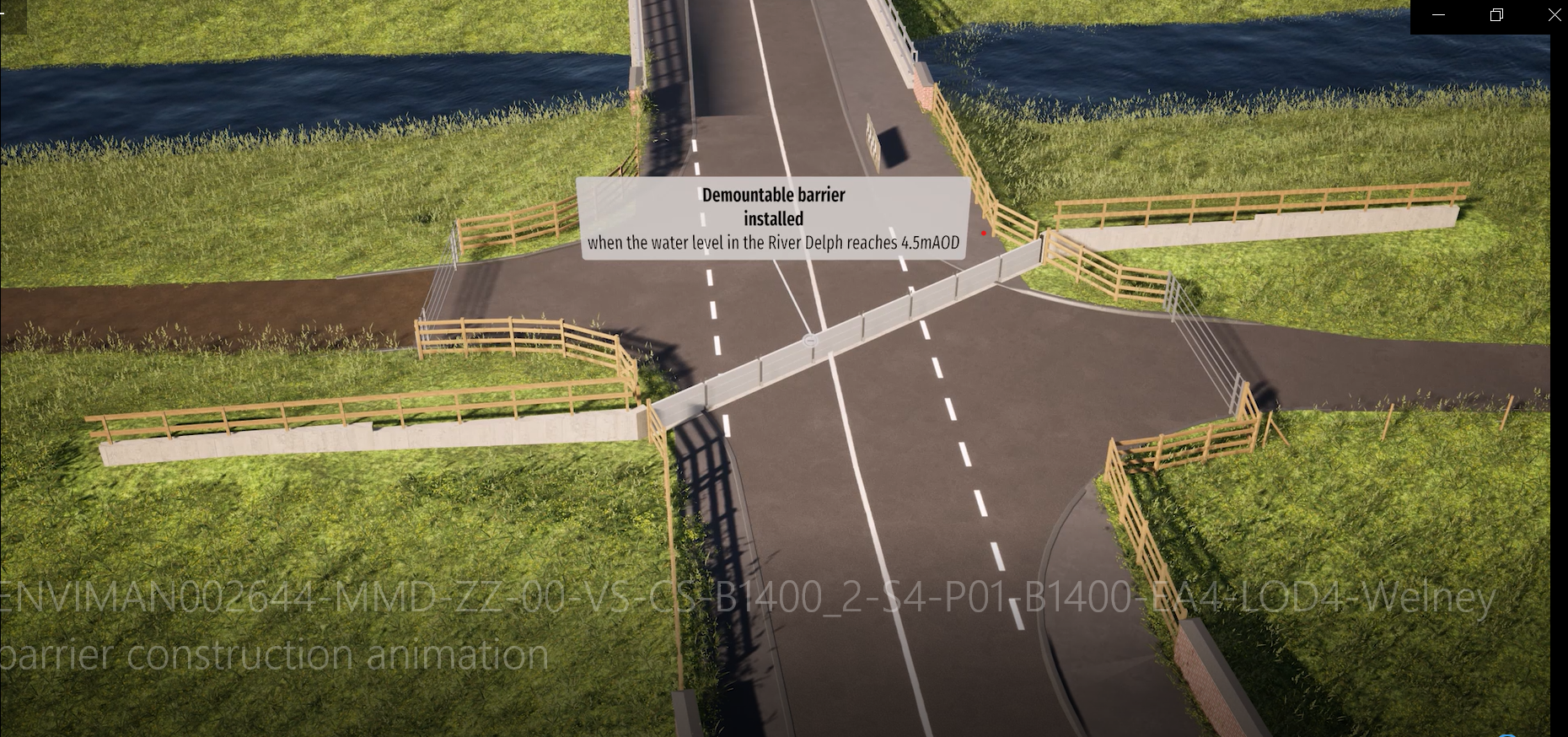Ouse Washes Section 10 Works information page
Overview
The purpose of this page is to provide information on how we comply with the Reservoirs Act 1975 and how we maintain the protection from flood risk for homes and businesses along the Ouse Washes.
The Ouse Washes Flood Storage Reservoir, is a 90,000,000m3 flood storage reservoir located in Cambridgeshire. It is approximately 30km (19 miles) long and up to 0.8km (0.5 miles) wide providing 1,900 hectares (approximately 4,700 acres) of land between the banks. The Dutch Engineer, Sir Cornelius Vermuyden, originally created the Ouse Washes in 1653 for the purpose of storing flood water.
Earith Sluice regulates flow entering the Old Bedford River and the Ouse Washes. Welmore Lake Sluice and pumping station maintain a defined water level in the Washes. The Ouse Washes is confined by the Middle Level Barrier Bank (Old Bedford) and the Cradge Bank (Hundred Foot River). Together these structures form the flood storage reservoir and are registered under the Reservoirs Act 1975 (the Act).
Click here to watch a video on how the Ouse Washes work Aerial view of the Ouse Washes flooded - courtesy of Bill Blake
Aerial view of the Ouse Washes flooded - courtesy of Bill Blake
The Ouse Washes is one of the largest remaining areas of lowland wet grassland in the UK and holds notable environmental value as a Site of Special Scientific Interest (SSSI), Special Protection Area (SPA), and a Ramsar site. It is also important from an agricultural aspect and is heavily grazed during the summer. This grazing serves a dual purpose as it facilitates the management of the Washes by controlling vegetation and maintaining the effective transfer of floodwater; it also acts as an effective technique to manage the grassland habitats providing best conditions for the vast array of bird species visiting the area.
The Ouse Washes is maintained by the Environment Agency (river, embankments and other structures), private landowners and the Hundred Foot Washes Internal Drainage Board (riparian habitat).
Click on the photo below to watch our project manager, Nicola Oldfield talking about the Ouse Washes. The video is hosted on the Institution of Civil Engineers site on Draining the Fens page.
A qualified civil engineer completed an inspection of the Ouse Washes in 2013 and recommended a number of Measures in the Interests of Safety under Section 10 (6) of the Act. These resulted in a project to raise the Middle Level Barrier Bank to address changes to the bank crest level caused by settlement.
 Diagram of the Ouse Washes
Diagram of the Ouse Washes
There are 3 roads that cross the Ouse Washes. These roads are called wash roads and are located at Earith, Sutton Gault and Welney. When the Ouse Washes is flooded these roads are under water.
Demountable flood barrier construction works at Welney
The Welney Wash Road crosses the Ouse Washes Flood Storage Reservoir and creates a low point in the Middle Level Barrier Bank. This low point increases the flood risk to the local community and the chance of a breach in the bank if water levels were to overtop it.
When the Washes is flooded and the water level on the Welney Wash Road reaches a predetermined level, Norfolk County Council highways team closes the road. When the water level rises to a higher, preset level, we have to build a temporary flood barrier across the road to stop the water spilling into Welney village. The last time we created such a barrier was in the winter 2012/13. Installing large sandbags is costly in terms of labour and waste.
Aerial view of the Ouse Washes and the Welney Wash Road flooded - courtesy of Bill Blake
As part of the bank raising work we have completed to comply with the Reservoirs Act, we needed to provide a more robust barrier on the Welney Wash Road where it intersects the Middle Level Barrier Bank. We sourced a demountable barrier option that will provide the robust flood protection solution and is bespoke to Welney. We store and deploy it from our Ely depot.
We have built a short concrete support wall on each side of the road by Welney to join the temporary barrier. We have also built a concrete slab across the road to attach the barrier whilst it’s in use. We were given permission from Norfolk County Council Highways team to close the road during that period to do this work. Click here to watch the construction animation video.

The Operations Field Team trialing the new demountable barrier across Welney Wash Road
Our objectives
Our objective was to ensure we comply with our duty under the Reservoirs Act to reduce the risk of an uncontrolled breach of water from the reservoir. The reservoir's banks provide flood protection to more than 2,000 properties and 67m000ha of agricultural land.
The Middle Level Barrier Bank protects surrounding areas from flood water stored in the reservoir. Our recent assessment of the bank height shows that flood water could overtop the bank at isolated locations in the equivalent of a 1% probability event. Overtopping could lead to erosion and subsequent collapse of the bank. Under the Act, the Middle Level Barrier Bank needs to be safe for a 0.1% probability event. Where communities are adjacent to the bank, the Middle Level Barrier Bank needs to be safe for a 0.01% probability event.
What we have done
We have raised the Middle Level Barrier Bank between Earith and Welmore Lake Sluice. Other associated works included:
- building the foundation and walls for fitting a demountable barrier at Welney (we will be asking for your views on the timing of this work below);
- building a new wall at Welches Dam Pumping Station;
- extending a retaining wall at Sutton Gault;
- decommissioning the Black Sluice culvert (near Earith).
We started construction work in 2017 and expect to finish in 2022. Because of the importance of the overwintering and breeding bird populations on the Washes, we can only work on the bank during a short period in the summer to autumn months. This is from mid-July to the end of October each year.
We have allowed further two years for the areas of newly seeded grass to establish during 2023 and 2024. The grass plays an important role in the stability of the bank and it needs to be well established before we can allow public access back onto the bank.

Aerial view of works
Work timeline
We started work in 2017 whilst still finalising the detailed design. We phased the works in different locations as the detailed design became available.
Year 1 works (2017) - We found material in the bank that was different to what the ground investigation results showed. When we analysed this material over the winter period (2017/18) we found that we could reuse most of this material but not all. The material that we could use needed further treatment before it was ready and this was time consuming. The material we could not reuse we stockpiled and removed from site.
Due to these ground conditions the design changed and we needed to import more material. This additional work, along with long periods of wet weather, delayed the first section of works and extended the 3-year programme to 4 years.
Year 2 works (2018) - As we progressed through the second year of construction, the weather was favourable and we completed all the work from the first year and the second year's work without any delays.
Year 3 works (2019) - This was a challenging year. The design evolved and the bank profile changed, increasing the footprint of the Middle Level Barrier Bank. Our contractor employed more resources and used larger machinery to import and place larger quantities of material at Welney and Mepal. However, the exceptionally wet weather during September and October caused delays when the clay material we are placing on the bank became too slippery and dangerous to continue working.
Because of this, we couldn’t complete the work near Welney in 2019. We returned in 2020 to complete the bank works. Subsequently we will complete the barrier works across the Wash Road in 2021 (year 5).
Year 4 works (2020) - This was another challenging year as we experienced long periods of wet weather once again, which prevented us from finishing the bank raising programme of 2020. Because of this, we couldn’t complete the bank raising work at Welney, Welches Dam RSPB Reserve or at the A142 at Mepal in 2020.
The increased footprint on the bank has reduced the space the contractor has to work in. We have used smaller machinery to manoeuvre in the workspace safely, particularly near Welches Dam. We were importing smaller loads of material which had increased the time to complete this section. The amount of material required to complete the project had increased from 320,000 tonnes to 487,000 tonnes. All these changes have increased the overall construction programme from 4 years to 6 years.
Year 5 works (2021) - We completed the majority of bank raising works except the section between Welches Dam and the rail bridge due to wet weather conditions that shortened our working window.
Year 6 works (2022) – We have done the rest of bank raising and haul road improvement works this year and completed this project.
We will continue to monitor settlement on the bank works that we completed in years 1 and 2 to ensure that it is as expected. Once we have collected sufficient survey data we can determine whether we need to top up years 1 and 2 as either part of these works or as part of future maintenance works.
 Bank works
Bank works
Public footpaths
The grass is important on the reservoir bank. As the grass grows, the roots help to stabilise the bank and reduce erosion. We use a mixture of different seeds to get a variety of different grass species.
Over the winter and spring months we regularly inspect the banks and grass growth on sections of work that we had completed. The grass is growing and the footpath diversions will stay in place until there is sufficient cover on the bank.
Events
-
Public drop-in event - Eartih
From 25 Jun 2019 at 16:00 to 25 Jun 2019 at 20:00Join us to find out about the progress of the works and what we are planning for this year.
Rectors Hall, Earith, PE38 9PX
You can contact our Public Liaison Officer, Monica Stonham, for further information on 07534 457 348 -
Public drop-in event - Welney
From 26 Jun 2019 at 14:00 to 26 Jun 2019 at 20:00Join us to find out about the progress of the works and what we are planning for this year.
The William Marshall Centre, Hurn Rd, Welney, PE14 9SD
You can contact our Public Liaison Officer, Monica Stonham for further information on 07534 457 348 -
Weekly surgeries
From 23 Jul 2019 at 10:00 to 31 Oct 2019 at 17:00Find out more about the work we are doing during the following surgeries:
EARITH ON WEDNESDAYS
AT RECTORS HALL
10am - 12pm
MANEA ON THURSDAYS
RSPB WELCHES DAM
10am - 12pm
WELNEY ON THURSDAYS
LAMB & FLAG PUB
3pm - 5pm -
Public Drop-in
From 23 Apr 2022 at 10:00 to 23 Apr 2022 at 14:30Join us to find out about the progress of the works and what we are planning for this year, including the temporary closure of the Welney Wash Road over the summer.
The William Marshall Centre, Hurn Rd, Welney, PE14 9SD
You can contact our Public Liaison Officer, Monica Stonham for further information on 07534 457 348
Audiences
- IDBs
- Local authorities
- District and parish councils
- Environmental bodies
- Land owners
- Farming associations
- Drainage associations
- RFCCs
- Elected representatives, including MPs
Interests
- Flood management
- Specific projects, issues, or activity pages




Share
Share on Twitter Share on Facebook